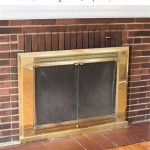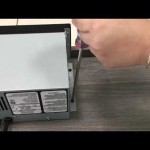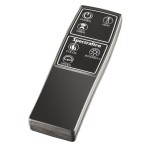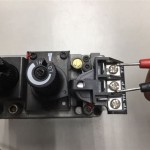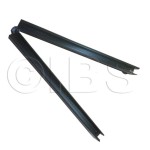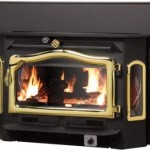Heat N Glo Fireplace Pilot Light: A Comprehensive Guide
Heat N Glo fireplaces are a popular choice for homeowners seeking efficient and aesthetically pleasing heating solutions. A critical component in many Heat N Glo fireplaces is the pilot light. Understanding the pilot light – its function, common issues, and troubleshooting steps – is essential for maintaining the fireplace's optimal performance and ensuring safe operation.
The pilot light is a small, continuous flame that serves as an ignition source for the main burner in a gas fireplace. When the thermostat or remote control signals the fireplace to turn on, the gas valve opens, allowing gas to flow to the main burner. The pilot light then ignites this gas, producing the larger, more substantial flames that provide heat. Without a functioning pilot light, the main burner cannot ignite, rendering the fireplace unusable.
Several factors can cause a Heat N Glo pilot light to malfunction. These can range from simple issues easily resolved by the homeowner to more complex problems requiring professional attention. This article will delve into the workings of Heat N Glo pilot lights, explore common issues encountered, and provide troubleshooting strategies for restoring proper fireplace operation.
Understanding the Pilot Light Assembly
The pilot light assembly is a small but intricate system comprising several key components. These parts work in conjunction to maintain a steady and reliable pilot flame. Familiarity with these components is crucial for diagnosing and addressing pilot light issues effectively.
The primary components of the pilot light assembly include the pilot burner itself, which is the small nozzle where the gas is released and ignited. Connected to the pilot burner is the gas supply line, a small tube that delivers gas from the main gas valve to the pilot burner. A crucial safety device, the thermocouple or thermopile, is also present. This device generates a small electrical current when heated by the pilot flame. This current is essential for keeping the main gas valve open, allowing gas to flow to both the pilot and the main burner. Lastly, there's often an igniter, which can be a spark igniter or a hot surface igniter, used to initially light the pilot flame.
The thermocouple and thermopile, while similar in function, operate slightly differently. A thermocouple generates a smaller electrical current and typically relies on the pilot light being consistently lit to maintain its current. A thermopile, on the other hand, generates a larger current and is often used in fireplaces with more advanced control systems or those requiring more power to operate the gas valve.
The entire assembly is often enclosed within a small housing to protect it from drafts and ensure a stable flame. The location of the pilot light assembly varies depending on the specific Heat N Glo fireplace model, but it is usually situated near the main burner assembly within the firebox.
Common Pilot Light Problems and Troubleshooting
A malfunctioning pilot light can manifest in several ways, each indicating a specific underlying issue. Recognizing these symptoms is the first step towards effective troubleshooting. Some of the most common problems include the pilot light failing to light initially, the pilot light lighting but then going out after a short period, a weak or flickering pilot flame, and the pilot light being difficult to light consistently.
Pilot Light Fails to Light:
Several factors can prevent the pilot light from lighting. The most common cause is a lack of gas supply. Ensure the main gas valve supplying the fireplace is turned on. Also, check the gas line for any kinks or obstructions that may be restricting gas flow. If the gas supply is confirmed, the problem may lie with the igniter. If it's a spark igniter, check if it is producing a spark at the pilot burner. If not, the igniter may be faulty and need replacement. For hot surface igniters, visually inspect the igniter element for any signs of damage or burnout. A multimeter can be used to test the igniter's continuity – a broken circuit indicates a faulty igniter.Pilot Light Lights but Goes Out:
This is often a sign of a problem with the thermocouple or thermopile. As mentioned earlier, these devices generate a small electrical current that keeps the main gas valve open. If the pilot flame is not properly heating the thermocouple or thermopile, or if the device itself is faulty, it will not produce enough current to hold the gas valve open, causing the pilot light to extinguish. To troubleshoot this, first ensure the pilot flame is engulfing the thermocouple or thermopile. Sometimes, soot or carbon buildup on the pilot burner can deflect the flame, preventing it from properly heating the device. Cleaning the pilot burner with a small brush can resolve this issue. If the flame is correctly positioned, the thermocouple or thermopile may be faulty and require replacement. These devices can be tested with a multimeter to check their voltage output. A reading significantly lower than the manufacturer's specification indicates a faulty device.Weak or Flickering Pilot Flame:
A weak or flickering pilot flame can be caused by several factors, including low gas pressure, a dirty pilot burner, or a partially blocked gas line. Low gas pressure is usually a problem affecting other gas appliances in the home as well. If other appliances are functioning normally, the issue is likely localized to the fireplace. A dirty pilot burner can restrict gas flow, resulting in a weak flame. Cleaning the pilot burner with a small brush and compressed air can often resolve this. A partially blocked gas line can also restrict gas flow. Carefully inspect the gas line for any kinks or obstructions. If the gas line is flexible, ensure it is not bent sharply. Replacing a damaged or obstructed gas line may be necessary.Pilot Light Difficult to Light Consistently:
Intermittent pilot light problems can be frustrating to diagnose. The issue may stem from a slightly faulty thermocouple or thermopile that is generating marginal current, a pilot burner that is partially obstructed, or fluctuations in gas pressure. Thoroughly clean the pilot burner and ensure the gas line is free of obstructions. Check the thermocouple or thermopile voltage output and compare it to the manufacturer's specifications. If the voltage is consistently low, even slightly, replacing the device is recommended. In some cases, issues with the main gas valve itself can contribute to inconsistent pilot light operation. If the gas valve is not opening fully or is sticking, it may not be providing a consistent gas supply to the pilot burner.Preventative Maintenance and Safety Considerations
Regular maintenance is crucial for preventing pilot light problems and ensuring the safe operation of a Heat N Glo fireplace. Neglecting maintenance can lead to reduced efficiency, increased risk of malfunctions, and potentially hazardous situations.
One of the most important preventative maintenance tasks is regular cleaning of the pilot burner. Over time, dust, soot, and other debris can accumulate on the pilot burner, restricting gas flow and affecting the stability of the pilot flame. Cleaning the pilot burner at least once a year, or more frequently if the fireplace is used heavily, is highly recommended. Use a small, soft brush and compressed air to gently remove any buildup from the burner nozzle. Avoid using sharp objects or harsh chemicals, as these can damage the burner.
Another important aspect of preventative maintenance is inspecting the gas lines for any leaks or damage. Gas leaks can be extremely dangerous, posing a fire and explosion hazard. Regularly inspect the gas lines and connections for any signs of damage, such as cracks, corrosion, or loose fittings. If you suspect a gas leak, immediately turn off the gas supply to the fireplace and contact a qualified gas technician. Do not attempt to repair gas leaks yourself.
Additionally, it is essential to have the fireplace professionally inspected and serviced at least once a year. A qualified technician can thoroughly inspect all components of the fireplace, including the pilot light assembly, gas valve, burner, and venting system. They can identify any potential problems before they escalate into more serious issues. Professional servicing also ensures that the fireplace is operating safely and efficiently.
When working on the pilot light or any other part of the fireplace, always prioritize safety. Before starting any work, turn off the gas supply to the fireplace at the main gas valve. Allow the fireplace to cool down completely before attempting any repairs or maintenance. Wear appropriate safety gear, such as gloves and eye protection. If you are not comfortable working on gas appliances, it is always best to consult a qualified gas technician.
Finally, ensure that the fireplace venting system is properly maintained and free of obstructions. A blocked venting system can cause dangerous carbon monoxide buildup, posing a serious health risk. Regularly inspect the venting system for any signs of blockage, such as debris, bird nests, or damaged vent pipes. If you suspect a blockage, contact a professional to have the venting system inspected and cleaned.
By understanding the function of the pilot light, recognizing common problems, implementing effective troubleshooting strategies, and adhering to preventative maintenance guidelines, homeowners can ensure the safe and efficient operation of their Heat N Glo fireplaces.

Relighting Your Heat Glo Standing Pilot Fireplace

Heat N Glo Townsend Fireplace Won T Light Doityourself Com Community Forums

Relighting Your Heat Glo Standing Pilot Fireplace

Heat N Glo Townsend Fireplace Won T Light Doityourself Com Community Forums
Heat N Glo 6000trxi Ipi Hearth Com Forums Home

Heat Glo Gas Fireplace Operation

Heat N Glo Replacement Parts Tagged Pilot Assemblies Fire Com

Heat N Glo Heatilator Direct Vent Fireplace Natural Gas Pilot Assembly 2103 010

Fireplace Not Starting Try This Stone Patio

Heat N Glo Townsend Fireplace Won T Light Doityourself Com Community Forums
Related Posts

